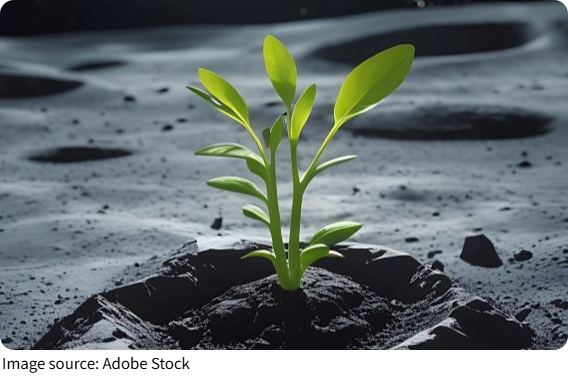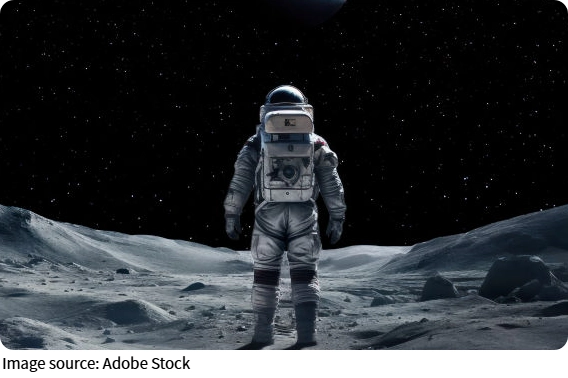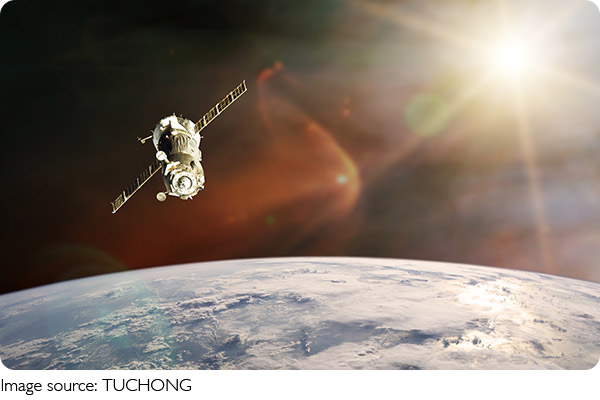Plants Sprouting on the Moon

It started as a lab experiment. A few grams of fine grey dust, sealed in a small dish, under a grow light. Then—something green emerged. It didn't look like much. A few delicate leaves, a slow push toward the light. But for scientists watching, it was a quiet revolution: a living plant growing in actual lunar soil for the first time.
That's not science fiction. In a NASA-backed experiment, researchers successfully germinated seeds in samples of real lunar regolith. While the plants didn't thrive long-term, they grew. And that single fragile success may be one of the most important steps toward not only space colonization—but rethinking how we grow food and survive on Earth.
The Challenge of Growing Life on the Moon
Lunar soil isn't like Earth's. There's no organic matter, no microbes, no nutrients. It's more like finely crushed rock—sharp-edged, bone-dry, and exposed to radiation for billions of years. It's missing everything plants usually depend on.
That's what made the experiment so bold. Scientists used tiny samples collected during Apollo missions, planting Arabidopsis thaliana seeds—a small flowering plant often used in biology research. The regolith was supplemented with water and nutrients, but no organic soil was added.
The result? Every single seed germinated. The plants later showed stress signs—slower growth, discoloration, and abnormal gene activity—but they were alive. This proved a core idea: lunar soil can support life, at least in its earliest stages.
That breakthrough shifts a major assumption in space agriculture: maybe we don't need to bring massive amounts of Earth soil with us after all.

What This Means for Space Farming?
If humans want to build sustainable habitats on the Moon—or even Mars—we'll need to grow food locally. Transporting food across space is inefficient, expensive, and limits mission duration.
The lunar soil experiment opens several new possibilities:
1. In-situ resource use: Instead of bringing all materials from Earth, astronauts could use what's already on the Moon to grow plants—reducing launch loads and costs.
2. Closed-loop life systems: Plants aren't just food. They produce oxygen, purify air, and support psychological well-being. Even modest plant growth could improve life in space habitats.
3. Customized nutrient strategies: Now that we know seeds can germinate in lunar soil, scientists can work on optimizing supplements—creating "smart fertilizers" to enrich space-grown crops.
Long-term, the goal is a self-sustaining biosphere in space. A greenhouse where the air, water, and nutrients are continually recycled—powered by solar energy, rooted in alien soil.
It's not just survival—it's regeneration.
What Earth Can Learn from Space Farming?
Here's where things get interesting for people who'll never leave the planet: experiments like this don't just help astronauts—they offer a lens to rethink Earth agriculture, especially under climate stress.
1. Soil health awareness
Lunar regolith is sterile, lifeless. It forces scientists to rebuild everything plants need from the ground up. That clarity has implications for farming in degraded soils on Earth—where fertility is rapidly declining. Understanding how to simulate missing nutrients or microbe networks in "dead" soil could revive farmland damaged by overuse or drought.
2. Water efficiency
Space systems recycle water obsessively. With global freshwater shortages on the rise, Earth-based farming could adopt similar closed-loop hydroponic or aeroponic systems—already used in some vertical farms—to grow more with less.
3. Urban farming models
If we can grow plants in lunar dust inside a small capsule, we can grow food in an apartment closet, a shipping container, or an abandoned warehouse. The principles of tight control, artificial lighting, and soilless growth developed for space are being tested right now on Earth—in cities trying to localize food systems.
4. Stress-resilient crops
The fact that plants struggled—but survived—on the Moon gives scientists data on what stress responses are triggered, and how to breed or engineer crops that can withstand extreme environments on Earth.
In short, space farming is more than just a futuristic curiosity. It's a laboratory for solving urgent food system challenges right here, right now.

From An Idea to An Strategy
There's something profoundly poetic about growing life in lifeless dust. For decades, lunar soil was an idea of emptiness—a place where nothing could thrive. Now, it's becoming a frontier for possibility.
Even if we never live on the Moon, the innovations driven by that goal will likely shape how we eat, breathe, and grow our food on Earth. The technology, the mindset, and the deep respect for life-sustaining systems are universally relevant.
Imagine if every city had a research-based greenhouse modeled on lunar systems—designed for zero waste, optimized nutrition, and total climate control. Imagine using lessons from a desolate moon to grow greens in a desert, or on rooftops in winter. That's not a dream anymore. That's design, backed by science.
It's easy to see lunar farming as a novelty—a cool headline or a distant ambition. But the first leaves pushing through that alien dust tell a deeper story. They speak of resilience, of imagination, and of our relentless drive to cultivate life, even in the harshest conditions.
And perhaps the most important message? We already have what we need to grow new futures—on the Moon and right here at home. We just have to start.


